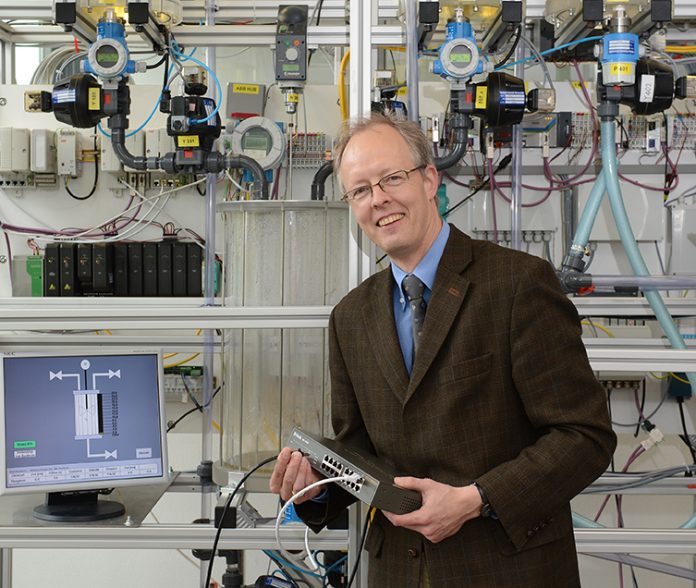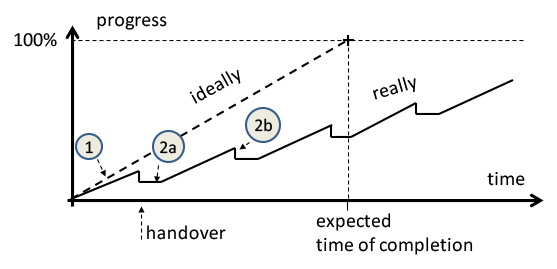Prof Dr Alexander Fay, Head of the Automation Technology Institute at HSU Hamburg, describes how methods, models and tools can support engineering workflow
The engineering of huge and complex technical systems, such as buildings, production, transportation and energy systems, requires the coordinated contributions of different crafts and organisations over a period of several months or even years. The envisaged systems are usually one-of-a-kind, and the design and implementation has to be right first time, as the schedules and budgets do not allow expensive iterations. Such engineering projects tend to miss their deadline for several reasons, especially:
- Inefficiency during the execution of single engineering tasks;
- Loss of (a) time and (b) information at the handover from one craft to the next.
At the Automation Technology Institute at Helmut Schmidt University, Hamburg, Germany, a set of methods has been developed to cope with these challenges. These methods have been developed in cooperation with industrial partners, from SMEs to global market leaders in automation, and have been successfully transferred into industrial practice. In the below sections, some of these methods are outlined. In addition, during operation, maintenance and modernisation of complex systems, the need for manual retrieval of engineering information increases costs and impairs quality, and scientific methods can also be of advantage here, as pointed out in section 3.
Methods to increase engineering efficiency
Engineering involves creative development of new ideas, but also the careful execution of repetitive tasks, such as the selection of suitable system components and their specification and configuration, according to given requirements1. The latter can be supported by knowledge based methods2 and design patterns.3 Based on a formal specification, e.g. GRAFCET (IEC60848), software code can be generated automatically to safely run the system.4 Semantic Web Technologies have recently successfully conveyed engineering knowledge.1, 5 The systematic re-use of proven solutions can speed up engineering.6 Model-based approaches provide support in the time-critical phase of system commissioning.7, 8
a) and b): Methods to ease the seamless handover to avoid the loss of (a) time and (b) information
We foster the use of the meta-model concept of IEC62424 which supports interdisciplinary information collection and transfer in engineering projects.9 Our industrial partners have applied this successfully to the automatic generation of simulation models,10 for the integration of process modules into the process control system,11 and throughout the complete engineering process of a building automation system.12
Methods to retrieve information from earlier engineering phases
Engineering documents hold valuable information to support engineering tasks during operation, maintenance, and modernisation, but to retrieve the information manually is cumbersome. We have developed methods to automatically retrieve such information from scanned and vector-graphic-based PDF documents,13 from legacy control system information,14 or from monitoring the behaviour of a system to create a discrete-event model of it.15 Information models, according to IEC62424, can ideally serve to hold the system’s structure and can be exploited e.g. to group and filter alarms, during plant operation.16
Though several methods have been developed, and model-based engineering has made significant progress during the last few years, there are still further challenges for the engineering of complex technical systems, especially regarding the software that controls these systems.17, 18 A combination and further development of methods from systems engineering, software engineering, artificial intelligence and related disciplines offers promising improvements, as is currently being explored in the framework of the “Industry 4.0” initiative to cope with increasing flexibility demands.19 In the future, we intend to continue to collaborate with companies and research institutes, and establish new research connections for joint research on the challenges of engineering.
References
1 Software support for building automation requirements Engineering – an application of semantic web technologies in automation. IEEE transactions on industrial informatics, Vol. 7, 4 (Nov. 2011), pp. 723-730.
2 Knowledge-based selection of principle solutions for sensors and actuators based on standardised plant description and semantic concepts. IEEE ETFA 2015.
3 Enhancing a model-based engineering approach for distributed manufacturing automation systems with characteristics and design patterns. The Journal of Systems & Software (2015), pp. 221-235.
4 Formal representation of GRAFCET to automatically generate control code. Control Engineering Practice, Vol. 33, Dec. 2014, pp. 84-93.
5 Knowledge-based engineering of automation systems using ontologies and engineering data. KEOD 2015.
6 Systematic interdisciplinary reuse within the engineering of automated plants. IEEE SYSCON 2015.
7 Supporting commissioning of production plants by model-based testing and model learning. IEEE ISIE 2015.
8 Design, implementation and testing of multi-energy infrastructures in agent. HyGrid. IEEE ENERGYCON 2016.
9 Concept and development of a semantic based data hub between process design and automation system engineering tools. IEEE ETFA 2016.
10 Automated generation of simulation models for control code tests. In: Control engineering practice 21 (2013), pp. 218-230
11 Engineering method for the integration of modules into fast evolving production systems in the process industry. IEEE CASE 2015.
12 Requirements engineering and modelling for Building automation systems. IEEE ETFA 2016.
13 Automatic detection and recognition of structural and connectivity objects in SVG-coded engineering documents. IEEE ETFA 2015.
14 Virtual plants for brown-field projects – automated generation of simulation models based on existing engineering data. IEEE ETFA 2015.
15 Automated determining of manufacturing properties and their evolutionary changes from event traces. Intelligent industrial systems, Vol. 2 (2), 2016, pp. 163-178.
16 A combined analysis of plant connectivity and alarm logs to reduce the number of alerts in an automation system. Journal of process control, Vol. 23, 6, July 2013, pp. 839-851
17 Challenges for software engineering in automation. Journal of software engineering and applications, 7, pp. 440-451
18 Evolution of software in automated production systems: Challenges and research directions. Journal of systems and software, Vol. 110, December 2015, pp. 54-84
19 Systematisation approach for the adaptation of manufacturing machines. IEEE ETFA 2016.
Alexander Fay
Head of the Automation Technology Institute
Automation Technology Institute
Helmut Schmidt University
Tel: +49 4065412719
Please note: this is a commercial profile












